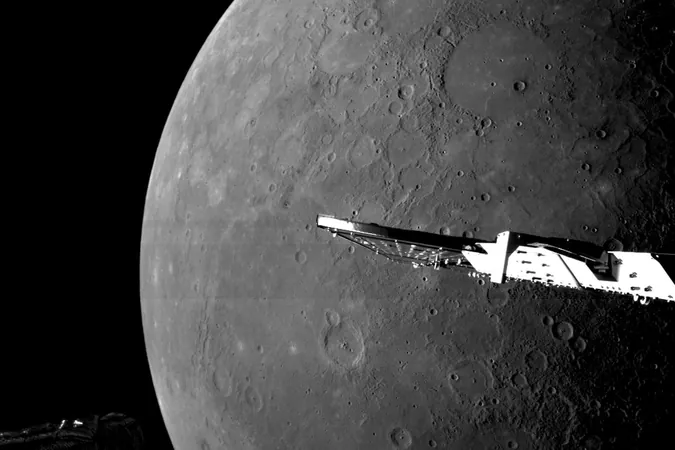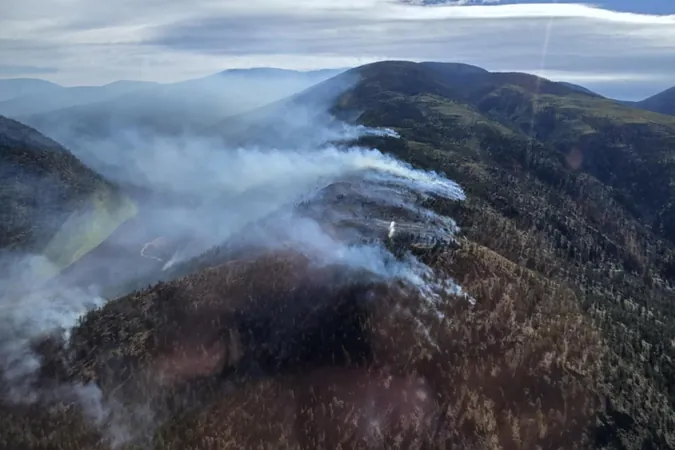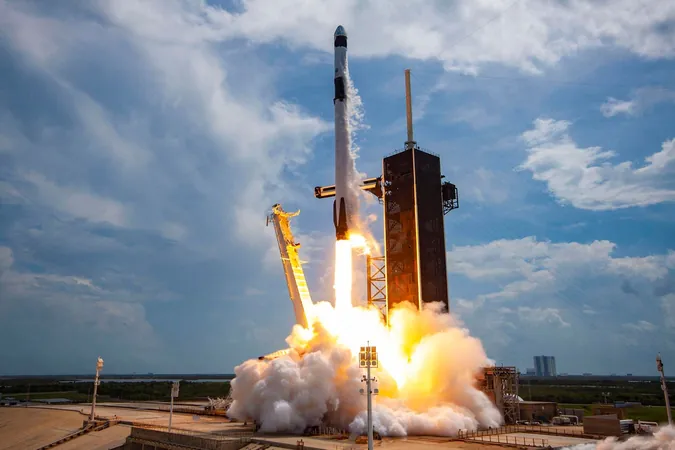
BepiColombo Delivers Stunning Close-Ups of Mercury's Mysterious Surface!
2025-01-11
Author: Michael
The European and Japanese collaborative spacecraft known as BepiColombo has successfully transmitted extraordinary detailed images of Mercury, the innermost planet of our solar system. During its sixth and final flyby, BepiColombo maneuvered through Mercury’s shadow, giving scientists a rare glimpse into the craters that remain eternally cloaked in darkness.
Launched in October 2018, BepiColombo is a joint venture between the European Space Agency (ESA) and the Japan Aerospace Exploration Agency (JAXA), consisting of two conjoined spacecraft that will eventually enter orbit around Mercury in 2026. On this latest encounter, the twin spacecraft approached Mercury within about 180 miles (295 kilometers) of its surface, allowing for remarkable close-up photography.
The images captured span from Mercury's ice-covered dark regions near the north pole to its illuminated northern terrain. During this flyby, BepiColombo’s advanced monitoring cameras (M-CAM 1) provided an unprecedented view of the terminator—the line separating day from night on the planet. Among the captivating features observable in the images are the striking rims of well-known craters including Prokofiev, Kandinsky, Tolkien, and Gordimer, which create persistent shadows that could harbor frozen water.
A focal point of the mission is to determine if Mercury conceals any water in these shadowed regions, a tantalizing prospect given the planet's scorching proximity to the Sun. Notably, the images showcase the vast Caloris Basin, Mercury's largest impact crater, measuring an impressive 930 miles (1,500 kilometers) in diameter, prominently visible in the images.
Despite its generally dark surface, scientists find that younger surface features, caused by more recent geological events, appear significantly brighter. Ongoing research suggests that materials extracted from deeper layers of Mercury become darker over time due to environmental exposure.
The latest images also highlight areas significantly influenced by volcanic activity and large asteroid impacts. One intriguing feature, Nathair Facula, located near the upper edge of the captured images, is speculated to be the aftermath of Mercury's biggest volcanic explosion, showcasing a volcanic vent around 25 miles (40 kilometers) wide with a history of major eruptions.
BepiColombo is a groundbreaking mission, being only the third to visit Mercury. The challenging nature of reaching this elusive planet, due to the Sun’s gravitational influence, further underscores the significance of this mission. The two distinct probes—the Mercury Planet Orbiter (MPO) by ESA and the Mercury Magnetosphere Orbiter (MMO) by JAXA—were launched together, and they are set to enter their respective orbits around Mercury in late 2026.
Since its inaugural flyby in October 2021, BepiColombo has been consistently delivering stunning close-up visuals and invaluable data about this enigmatic planet. 'Although the primary mission phase is still two years away, the insights gleaned from all six flybys to date are already offering a wealth of information about this less-explored world,' stated Geraint Jones, BepiColombo’s project scientist at ESA.
As the BepiColombo team braces for further analysis of the latest data, the quest to unlock Mercury's long-hidden mysteries continues! Stay tuned as more discoveries are on the horizon!









 Brasil (PT)
Brasil (PT)
 Canada (EN)
Canada (EN)
 Chile (ES)
Chile (ES)
 Česko (CS)
Česko (CS)
 대한민국 (KO)
대한민국 (KO)
 España (ES)
España (ES)
 France (FR)
France (FR)
 Hong Kong (EN)
Hong Kong (EN)
 Italia (IT)
Italia (IT)
 日本 (JA)
日本 (JA)
 Magyarország (HU)
Magyarország (HU)
 Norge (NO)
Norge (NO)
 Polska (PL)
Polska (PL)
 Schweiz (DE)
Schweiz (DE)
 Singapore (EN)
Singapore (EN)
 Sverige (SV)
Sverige (SV)
 Suomi (FI)
Suomi (FI)
 Türkiye (TR)
Türkiye (TR)
 الإمارات العربية المتحدة (AR)
الإمارات العربية المتحدة (AR)